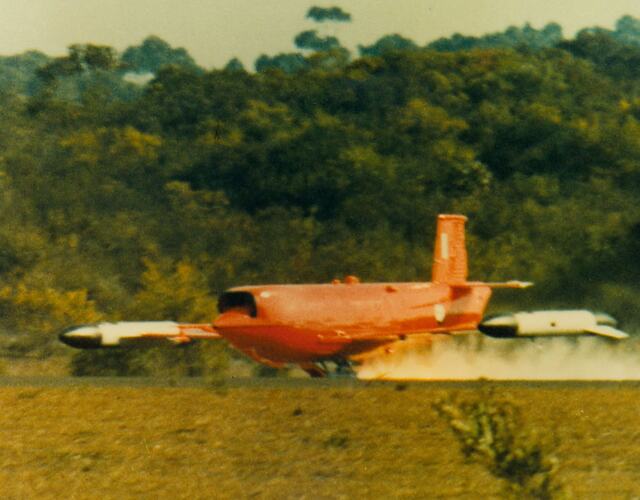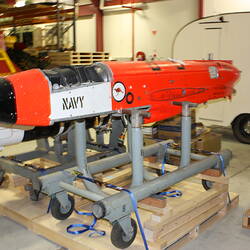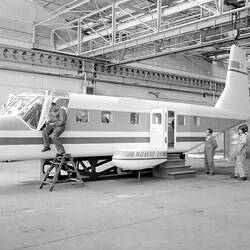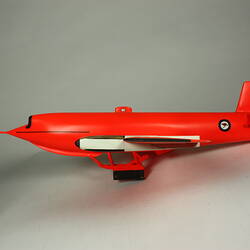The Jindivik pilotless, jet-powered target aircraft is the most successful Australian aviation design in terms of numbers exported and for its very long production life. Design work began at the Government Aircraft Factories, Port Melbourne in 1948 to a British Ministry of Supply Specification E.7/48. Remote-controlled and piloted versions were designed by a GAF team led by Ian Fleming. The piloted version known as the Pika was intended as a trials aircraft to test the design of the Jindivik which was said to be an Aboriginal word meaning 'the hunted one'.
Jindivik was intended to provide the Joint British-Australian Weapons Research Establishment in South Australia with a suitable high-speed target to assist development of guided missiles and rockets. The Pika piloted version was first flown at Woomera, SA in 1950 but only two were built. The first radio remote-control flight by a Jindivik took place on 28 August 1952 with an Adder engine as used by Pika. Production aircraft were fitted with an Armstrong-Siddeley Viper jet engine. Apart from Britain and Australia, sales were made to Sweden and the US Navy. The design was developed progressively (Mk's 3 & 4) with refinements in the control equipment, longer span wings for higher alitude operations and provision for camera pods and towing of infra-red and radar targets. All versions used a jettisonable three-wheeled trolley for take-off and a retractable sprung skid for landing.
By 1986, 500 Jindiviks had been built and production stopped in 1997. They remained in service in Britain until 2003 when the last Mk 4A was flown at Llanbedr in Wales.
More Information
-
Keywords
-
Localities
-
Authors
-
Article types



